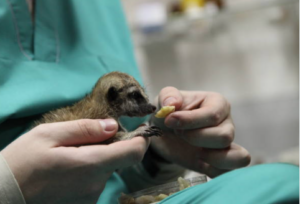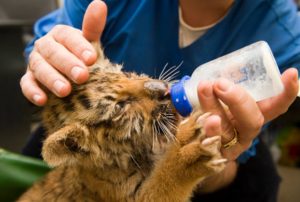A Vision for Ethical and Conservation-Focused Animal Enclosures

Zoos have long been spaces of wonder, education, and entertainment. However, as our understanding of animal welfare and conservation has evolved, so too must our approach to housing and caring for the incredible creatures that captivate our hearts. In this blog, we embark on a visionary journey to explore the concept of reimagined zoos – spaces that prioritize ethical treatment, conservation efforts, and a harmonious coexistence between animals and humans.
I. Ethics in Animal Enclosures
A. Beyond Cages:
Zoos have undergone a transformative shift from confining cages to expansive enclosures that prioritize the physical and psychological needs of animals. The traditional notion of animals pacing back and forth in small cages is being replaced with habitats that mimic their natural environments. These new spaces provide room for exploration, allowing animals to express their instincts and behaviors freely.
These redesigned enclosures often incorporate lush vegetation, water features, and topographical diversity. For instance, instead of concrete floors, habitats may include soft substrates, encouraging natural behaviors like digging and foraging. The shift from cages to thoughtfully designed habitats marks a departure from the outdated concept of containment and reflects a commitment to ethical animal care.
B. Behavioral Enrichment:
Ethical zoos prioritize the mental well-being of their residents through comprehensive behavioral enrichment programs. Enrichment involves providing animals with stimuli that engage their senses, encouraging mental and physical stimulation. This can include puzzles, scent trails, and interactive toys that challenge animals cognitively.
Observing the positive impact of behavioral enrichment is both fascinating and heartening. Animals that once displayed signs of stress or boredom now exhibit natural behaviors, fostering a healthier and more fulfilling life in captivity. Ethical zoos are at the forefront of creating dynamic environments that encourage curiosity and play, contributing to the overall welfare of the animals in their care.
C. Species Compatibility:
Traditionally, zoos grouped animals based on taxonomy, overlooking the importance of social structures and behavioral compatibility. Ethical enclosures now prioritize the creation of multi-species habitats that replicate natural ecosystems. This approach allows animals to interact more authentically, promoting social bonds and reducing stress.
An excellent example is the African savannah exhibit, where species like giraffes, zebras, and antelopes coexist as they would in the wild. Observing these animals interact not only educates visitors about their natural behaviors but also reinforces the importance of respecting and preserving the intricate social structures within animal communities.
D. Visitor Education:
Central to the ethical transformation of zoos is the role of visitor education. Zoos are evolving into educational hubs where visitors gain insights into the significance of ethical practices and conservation efforts. Interpretive signage, guided tours, and interactive exhibits educate visitors about the importance of providing animals with environments that prioritize their welfare.
By fostering an understanding of animal behavior, the challenges they face in the wild, and the role of ethical zoos in conservation, visitors become ambassadors for positive change. The educational aspect of these zoos extends beyond the enclosure, creating informed advocates for ethical practices in animal care and conservation. Ethical zoos recognize the symbiotic relationship between visitor education and the well-being of their residents, fostering a deeper connection between humans and the animal kingdom.

II. Conservation-Focused Initiatives
A. Breeding and Reintroduction Programs:
Hub for Endangered Species: Ethical zoos have embraced the responsibility of becoming breeding hubs for endangered species. These programs aim not only to ensure the survival of vulnerable populations but also to maintain genetic diversity within species facing threats in the wild.
Success Stories: Zoos have achieved notable success in breeding programs, with some species making a remarkable recovery. For instance, the California condor, once on the brink of extinction, has seen a population resurgence due to collaborative breeding efforts.
Reintroduction into the Wild: The ultimate goal of these breeding programs is to reintroduce animals into their natural habitats. Ethical zoos actively participate in conservation projects that facilitate a smooth transition for these animals back into the wild, contributing to the restoration of ecosystems.
B. Genetic Diversity Preservation:
Advanced Genetic Technologies: Ethical zoos leverage advanced genetic technologies to maintain genetic diversity within captive populations. This includes strategies such as artificial insemination, in vitro fertilization, and genetic mapping to ensure the health and vitality of species.
Genetic Banking: Some zoos have established genetic banks as a proactive measure to safeguard the genetic material of endangered species. These banks serve as reservoirs of genetic diversity, allowing scientists to reintroduce genetic material into populations if needed.
Collaboration with Geneticists: Ethical zoos collaborate with geneticists and researchers to implement cutting-edge techniques that contribute to the broader field of conservation genetics. This collaboration not only enhances the genetic health of captive populations but also informs conservation strategies on a global scale.
C. Educational Outreach and Advocacy:
Raising Awareness: Beyond their physical spaces, ethical zoos prioritize educational outreach as a powerful tool for conservation. Awareness campaigns, workshops, and events aim to inform the public about the challenges faced by wildlife and the critical role zoos play in conservation efforts.
Community Engagement: Ethical zoos actively engage with local communities, fostering a sense of shared responsibility for conservation. Collaborative initiatives involve schools, community groups, and businesses in conservation projects, promoting a collective effort to protect biodiversity.
Advocacy for Sustainable Practices: Ethical zoos extend their influence beyond their immediate surroundings by advocating for sustainable practices on a larger scale. This may include supporting legislative measures, partnering with environmental organizations, and encouraging visitors to adopt eco-friendly lifestyles.
D. Partnerships with Conservation Organizations:
Global Collaboration: Ethical zoos recognize the interconnectedness of conservation efforts worldwide and actively engage in partnerships with global conservation organizations. These collaborations amplify the impact of conservation initiatives, fostering a united front against biodiversity loss.
Financial Support: Zoos contribute financial resources to support field projects, anti-poaching efforts, and habitat preservation. The funds generated from zoo admissions, memberships, and donations often go directly toward these critical conservation endeavors.
Research Collaboration: Ethical zoos collaborate with conservation researchers, sharing data and insights that contribute to a deeper understanding of the challenges facing wildlife. This collaboration enhances the scientific community’s ability to develop effective conservation strategies.

III. Innovations in Zoo Architecture
A. Biophilic Design Principles:
Integration of Natural Elements: Ethical zoos embrace biophilic design principles, integrating natural elements seamlessly into their architectural plans. This involves incorporating greenery, water features, and natural light to create environments that closely mimic the natural habitats of the animals.
Enhanced Visitor Experience: Biophilic design not only benefits the animals but also enhances the visitor experience. Zoos with biophilic architecture provide visitors with immersive, nature-inspired spaces that foster a deeper connection with the natural world.
Therapeutic Environments: The presence of natural elements has been linked to therapeutic benefits for both animals and humans. Ethical zoos prioritize the creation of environments that promote the well-being of their residents while offering visitors a serene and rejuvenating experience.
B. Sensory Experiences:
Engaging All Senses: Ethical zoos go beyond visual engagement and design enclosures that cater to all senses. This includes the incorporation of soundscapes, interactive tactile elements, and even scents that mimic the animals’ natural surroundings.
Multi-Sensory Exhibits: Innovative enclosures are designed to stimulate not only the eyes but also the ears, nose, and touch. For example, a rainforest exhibit may include the sound of rainfall, the scent of tropical plants, and textured surfaces for a more holistic experience.
Educational Significance: The multi-sensory approach serves an educational purpose, allowing visitors to better understand the environments these animals come from and the sensory challenges they face in captivity.
C. Technology Integration:
Augmented Reality (AR) and Virtual Reality (VR): Ethical zoos leverage AR and VR technologies to enhance the visitor experience. Virtual tours, interactive exhibits, and educational games provide visitors with a deeper understanding of animals and their habitats.
Conservation Storytelling: Technology is harnessed to tell compelling stories about conservation efforts. Interactive displays and virtual experiences take visitors on a journey, shedding light on the challenges faced by wildlife and the crucial role zoos play in conservation.
Digital Education Platforms: Zoos use technology to extend their educational reach. Online platforms, virtual classrooms, and live-streamed events connect audiences globally, allowing people to engage with conservation messages from the comfort of their homes.
D. Architectural Sustainability:
Green Building Practices: Ethical zoos prioritize sustainable architectural practices, incorporating green building materials and energy-efficient technologies. This commitment to sustainability aligns with the broader goal of minimizing the ecological footprint of zoo facilities.
Eco-Friendly Infrastructure: Zoos invest in eco-friendly infrastructure, such as solar panels, rainwater harvesting systems, and energy-efficient lighting. These initiatives not only reduce operational costs but also demonstrate a commitment to environmental responsibility.
Habitat Integration: Architectural designs seamlessly integrate animal habitats into the surrounding landscape. The goal is to create a cohesive environment that blurs the boundaries between enclosures and natural spaces, providing animals with a more authentic and aesthetically pleasing living environment.
E. Visitor Engagement and Education Centers:
Interactive Exhibits: Modern zoo architecture emphasizes interactive exhibits that engage visitors in immersive learning experiences. Interactive touchscreens, informative displays, and hands-on activities encourage visitors to actively participate in their educational journey.
Conservation Workshops: Ethical zoos often include dedicated education centers where visitors can participate in workshops focused on conservation, sustainability, and animal welfare. These centers serve as hubs for learning, fostering a sense of responsibility for the environment.
Inclusive Design: Zoos prioritize inclusive design, ensuring that exhibits and educational spaces are accessible to visitors of all ages and abilities. Inclusive design enhances the educational experience for diverse audiences, fostering a greater understanding of and appreciation for the natural world.

IV. Community Involvement and Empowerment
A. Local Collaboration:
Building partnerships with local communities to ensure the zoo’s positive impact on the surrounding area.
Involving communities in conservation efforts and providing economic opportunities.
B. Volunteer Programs:
Engaging volunteers in zoo operations, educational programs, and conservation projects.
The reciprocal benefits of volunteer involvement for both the community and the zoo.
C. Accessible Education:
Developing programs that make educational resources and experiences accessible to diverse socio-economic groups.
The role of zoos in inspiring the next generation of conservationists through educational outreach.
Some Challenges and Solutions:
A. Balancing Visitor Expectations with Conservation Goals:
Addressing the challenge of maintaining visitor engagement while prioritizing conservation-focused practices.
Strategies for educating visitors about the importance of ethical and conservation-focused zoos.
B. Financial Considerations:
The economic challenges zoos face in transitioning to more ethical and conservation-focused models.
Innovative funding approaches and partnerships to support conservation initiatives.
C. Overcoming Resistance to Change:
Strategies for addressing skepticism or resistance from within the zoo community or among visitors.
Case studies of zoos that successfully navigated the transition to more ethical practices.
In reimagining zoos as ethical, conservation-focused spaces, we have the opportunity to redefine our relationship with the animal kingdom. By prioritizing the well-being of the inhabitants, engaging in impactful conservation efforts, and involving communities, zoos can become catalysts for positive change. As visitors, advocates, and stewards of the Earth, we hold the power to shape a future where zoos play a pivotal role in preserving biodiversity and fostering a deep appreciation for the wonders of the natural world. The vision for zoos reimagined is not just a dream; it’s a shared responsibility to create a better, more sustainable world for all living beings.

